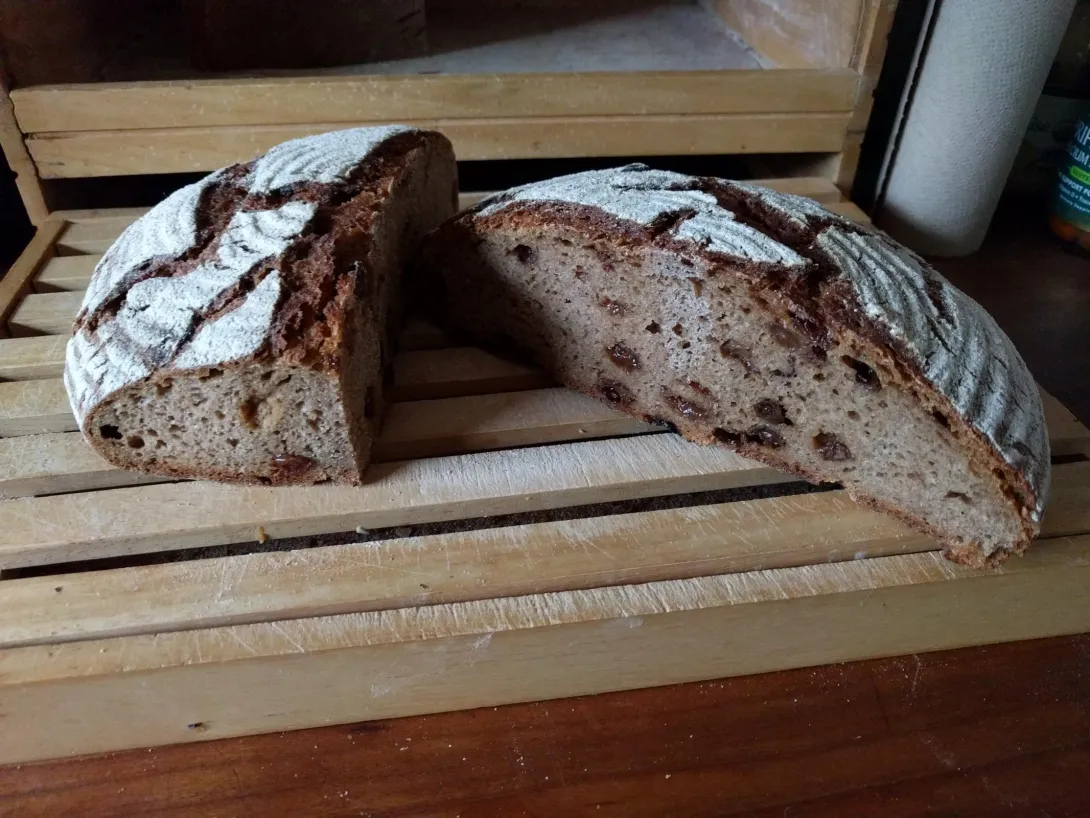Rye and Raisin

Bernard Clayton Jr's The Breads of France, Daniel Leader's Local Breads, and Joe Ortiz' The Village Baker each offer formulas, recipes, and lore on European bread. The authors, all from the USA, published their books between 1978 and 2007 after travels in France, Italy, Germany, Czechoslovakia (as it was then), and Poland. In recent weeks I've been concentrating on French breads from these books, specifically pain campagne and pain de seigle.